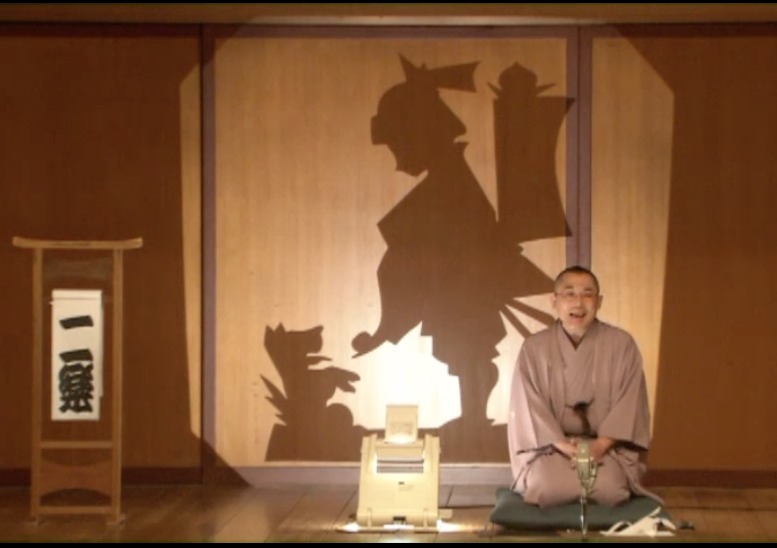
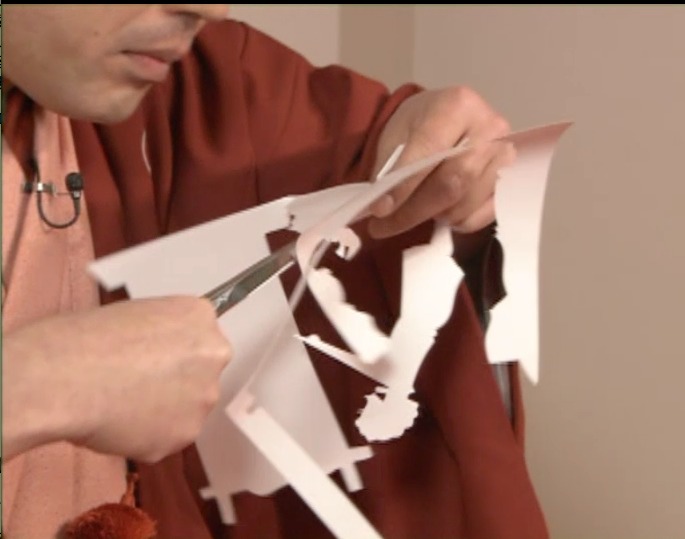
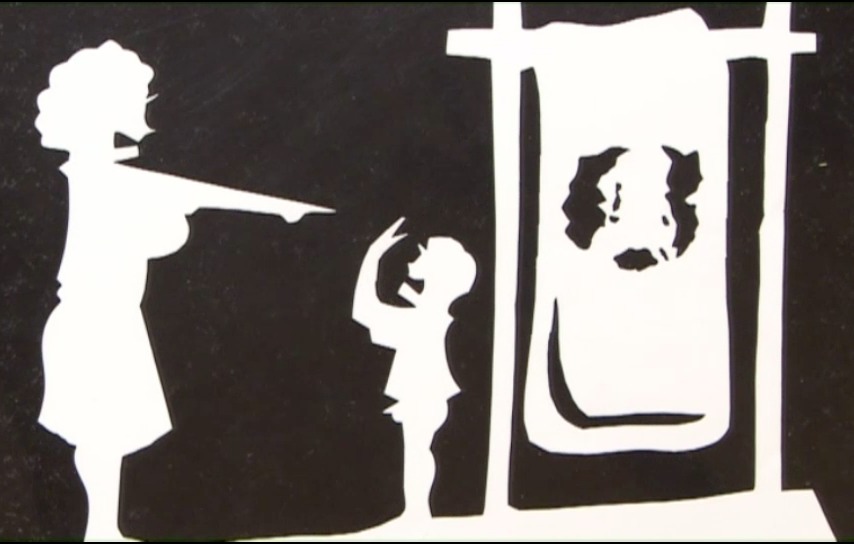
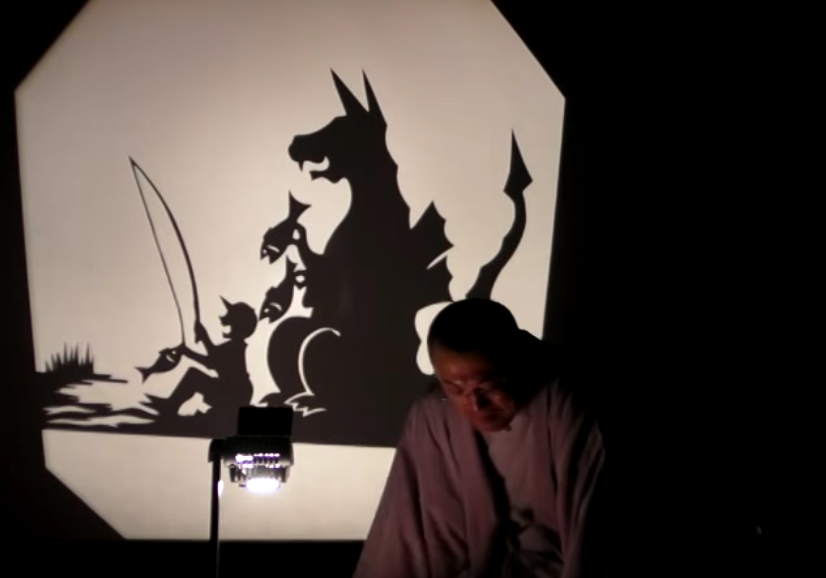
Kazumi Hatasa, Purdue University
khatasa@purdue.edu
(Translation: Megumi Inoue)




Kamikiri is a variety act (Iromono) in between Rakugo stories at
the Yose theaters. The performance involves cutting silhouettes
out of a plain piece of paper based on requests from the audience
on site. Kiri-e is an art form that takes time and cuts out very
intricate pieces. The art is well-known throughout Europe and
Asian countries but Kamikiri performance is only seen in Japan.
The closest thing I’ve seen is at Disneyland when they would cut
people’s profiles on site. If anyone has seen any other types of
paper cutting performances or acts similar to Kamikiri, please
feel free to let me know.
Kiri-e mainly uses knives but Kamikiri only uses scissors. The
start of the performance was in the Meiji era, when western
scissors were introduced to Japan. Initially, the scissors were
used to demonstrate how well they cut but later developed into a
full performance.
Master Hayashiya Shouraku (1896-1966) was the first to introduce
this performance to an audience. His disciple Master Hayashiya
Shouraku 2nd (1935-1998) continued during the Showa era. Master
Hayashiya Niraku is Shouraku 2nd’s 2nd son.
There are 2 main skills needed to be a Kamikiri performer. The
first is scissor skills. In a speedy manner, the performer is
required to cut the silhouette, utilizing a whole blank sheet with
no drawings, in one stroke. Niraku is able to create a piece in a
short time due to his extensive years of training. The
second skill is knowledge and creativity. When the audience shouts
out a request during the performance, the performer does not know
those requests ahead of time. They need to be able to recognize
the order and build an image in their head. Niraku says that since
he doesn’t know what to expect, he pays close attention to what is
on the newspapers, TVs, magazines and the internet on a daily
basis.
He feels the capability of taking in a request and constructing
it into a vision, plus making the audience happy, entails
creativity. When Niraku was asked for advice in the past he
replied “Even thought you have great scissor skills, if you lack
in creativity I can’t advise you to become a Kamikiri perfomer.”
What decides the piece you are about to cut?
What are steps to cut a piece without drawing? What techniques do you use?
How long do you practice for?
Have you made mistakes during a performance?
What are popular requests?
How do you prepare for a wide range of requests?
This program is a nice introduction to Kamikiri in English.
After receiving a request, performers start cutting right away which makes it very hard for the audience to see how they are cutting. They also sway their bodies and rotate the paper during their performance. These are all techniques to not let the audience suspect what the end piece is.
In order to see how the performers cut, I asked Niraku to draw
Benkei, which is a piece he has been cutting for many years. I
asked him to draw it in 1 stroke as if he was cutting. I assumed
that he would start from the top but then was surprised. I noticed
that he started to draw from the lower right corner of the paper,
where the foot would be. He continues to turn the paper around and
kept the pen stable. Through this experiment I realized how he
perceives images are different from us.
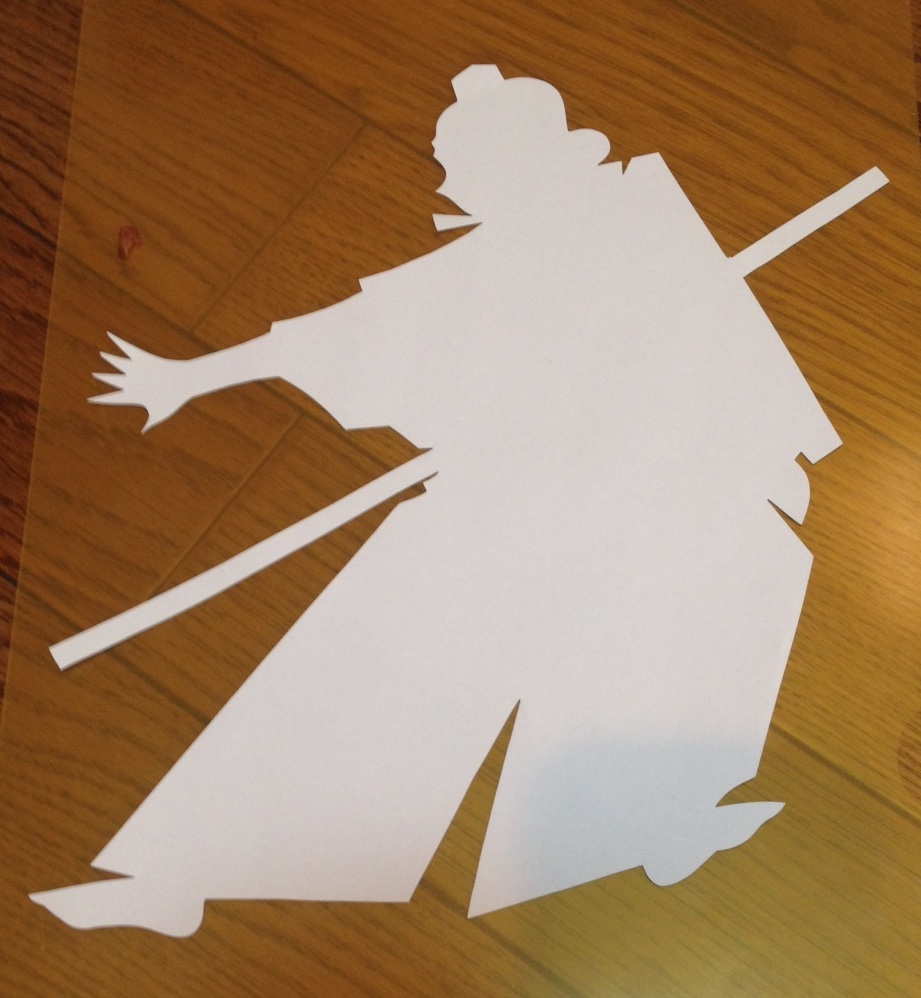
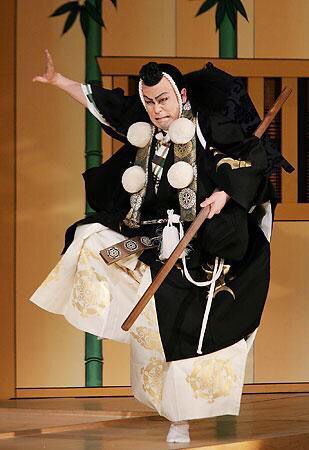
As a continuation from the last experiment, I asked Niraku to
draw Benkei once again in 1 stroke. But this time I asked him to
stop drawing halfway and covered the half (from the back foot, up
the back and to the top of the head) that he just drew with
another sheet of paper. I then asked him to continue drawing as if
he was cutting the 2nd half of Benkei. When he was done, I lifted
the covered paper and noticed that the 2 halves completed to a
perfect whole piece. Even the stick Benkei is holding is a perfect
match.
In this experiment, I asked him to draw Momotaro, which is
another piece he has been cutting for years in 1 stroke. It’s a
scene where Momotaro is facing a dog and handing him a kibi-dango.
Niraku, just like drawing Benkei, starts from the lower right
corner where Momotaro’s heel is, and continues up the back. After
he’s done drawing Momotaro, and works his way to the dog he says,
“I can’t continue to draw like this” and stops. I tell him to
continue as he normally would and Niraku flips the paper over and
drew the dog on the other side. I was very surprised with this.
This appears to be the case because in the way that his
teacher/master taught, people/animals are always cut from their
backs. So, he can’t cut from the character’s front side. Thus,
when Niraku gets requests with 2 silhouettes facing each other he
always has to flip the paper over. Be aware of this the next time
you watch a Kamikiri performance.
When Niraku is performing on stage, he uses Momotaro as his
(Hasami-dameshi) 1st practice piece. I asked him how many of these
he has cut in the past. He answers “I cut Momotaro at least once a
day, so maybe in a year around 400. But then I’ve been doing this
for 30 years!”
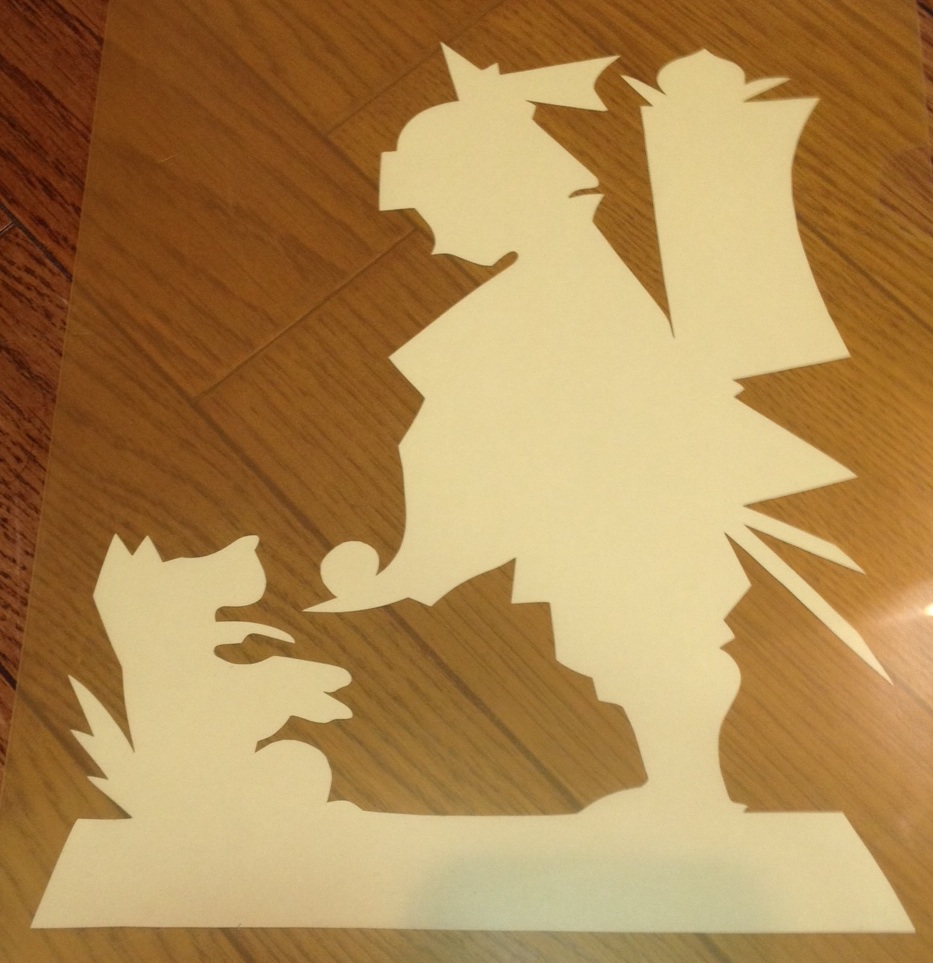
Kyoku-neta is considered Niraku’s original creation. I don’t
think there are any other Kamikiri performers that offer this
entertainment. Like a shadow slide show, he has multiple pieces
that has been cut prior to and projects those images using an
“ancient” overhead projector to a song. This represents Niraku’s
“skills” and his interpretation of song lyrics expressed through
his “knowledge” and “creativity”.
Below are some of his YouTube videos.

     |